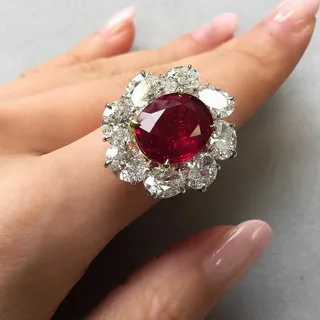Ruby jewelry has captivated humans for centuries, not only for its breathtaking beauty but also for its intriguing scientific properties. Understanding what makes rubies so unique helps jewelers, gem enthusiasts, and buyers appreciate these precious stones on a deeper level. In this article, we delve into The Science of ruby jewelry: Understanding the Gem’s Unique Qualities, exploring the composition, formation, and characteristics that set rubies apart from other gemstones.
What Makes Ruby Jewelry Special?
Rubies are a variety of the mineral corundum, primarily composed of aluminum oxide (Al₂O₃). What distinguishes a ruby from other corundum stones, such as sapphires, is its vibrant red color, which comes from trace amounts of chromium. The presence of chromium atoms replaces some aluminum atoms in the crystal lattice, causing the stone to absorb specific wavelengths of light and reflect that fiery red hue.
The Formation of Rubies: A Geological Marvel
The formation of rubies is a fascinating process that occurs deep within the Earth under high pressure and temperature conditions. Typically found in metamorphic rocks like marble or in basalt deposits, rubies crystallize over millions of years. The exact environment of formation influences the purity and clarity of the gemstone, contributing to its unique qualities.
Unique Optical and Physical Properties
Hardness and Durability
One of the key scientific aspects contributing to the appeal of ruby jewelry is its remarkable hardness. Rubies score 9 on the Mohs scale, making them one of the hardest natural gemstones, second only to diamonds. This exceptional hardness ensures that ruby jewelry remains durable and resistant to scratches, ideal for everyday wear.
Color and Light Interaction
The captivating red of rubies is not uniform across all stones. The exact shade, from deep crimson to lighter pinkish-red, depends on the amount and distribution of chromium. In addition, rubies exhibit a phenomenon called fluorescence, where the gemstone glows under ultraviolet light, often enhancing its vibrant appearance.
Inclusions: Nature’s Fingerprints
Unlike synthetic gems, natural rubies often contain microscopic inclusions or internal characteristics. These inclusions act as “fingerprints,” helping gemologists authenticate the origin and natural formation of ruby jewelry. Rather than detracting from value, certain inclusions can increase a ruby’s desirability due to their uniqueness.
Enhancements and Treatments: Science Behind the Sparkle
Many rubies on the market undergo treatments such as heat treatment to improve color and clarity. The science behind these treatments involves altering the gemstone’s internal structure to enhance its visual appeal without compromising its natural properties. Understanding these enhancements is vital for anyone interested in purchasing ruby jewelry.
Conclusion
The science of ruby jewelry reveals much more than its stunning appearance. By understanding the geological formation, chemical composition, and unique optical properties, enthusiasts gain a deeper appreciation for this remarkable gemstone. Whether admired for its brilliant red glow or prized for its durability, the ruby remains a timeless symbol of beauty and strength.
Exploring The Science of Ruby Jewelry: Understanding the Gem’s Unique Qualities truly enriches our connection with these precious stones, highlighting why they continue to be cherished throughout history and across cultures.


